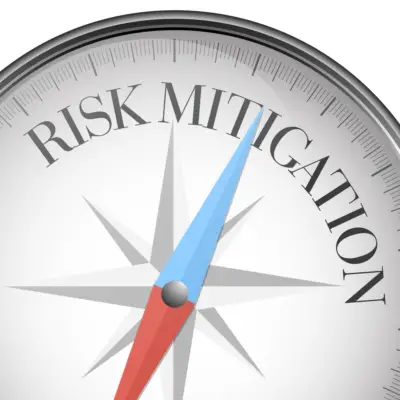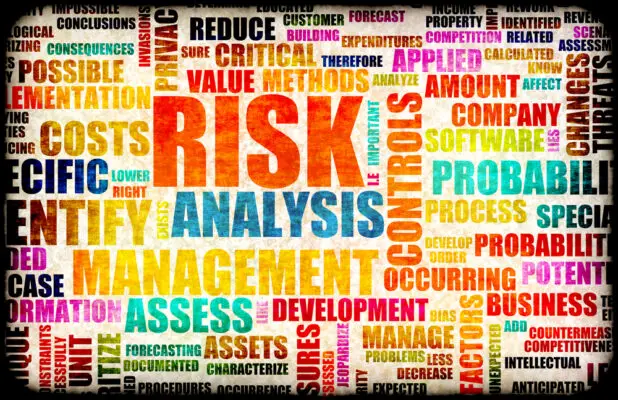A Compliance Risk Assessment Questionnaire is an essential tool that helps organizations evaluate compliance with relevant laws, regulations, and industry standards.
The questionnaire should be designed to identify potential non-compliance areas and assess the associated risk. Here are some key elements that such a questionnaire might include:
- Identification of Applicable Laws and Regulations: Questions should determine whether the business knows all the regulatory requirements for its operations. This could include industry-specific laws, international regulations, or local ordinances.
- Compliance Program Evaluation: Inquire about the existence and effectiveness of the organization’s compliance program. This includes training programs, policies and procedures, monitoring and auditing systems, and disciplinary mechanisms.
- Risk Management Processes: Questions should assess how the organization identifies, evaluates, and mitigates compliance risks. This could involve understanding the processes for conducting regular risk assessments and the criteria for prioritizing risks.
- Third-Party and Vendor Management: Evaluate how the organization manages compliance risks related to third-party relationships, such as vendors, suppliers, and contractors.
- Incident Management and Reporting: The questionnaire should ask about the procedures for reporting and responding to compliance incidents or breaches.
- Continuous Improvement: Assess whether the organization has a process for continuously updating and improving the compliance program based on changing laws and identified risks.
- Leadership and Culture: Evaluate the role of leadership in promoting an ethical culture and commitment to compliance throughout the organization.
- Key Concerns and Processes: Specific questions about the organization’s key areas of concern for the upcoming fiscal year and key processes, functions, and operations.
SurveySparrow offers a template that helps organizations assess compliance with laws, regulations, and industry standards through a Compliance Risk Assessment Questionnaire.
It’s important to note that the questionnaire should be tailored to the unique risks and business models of each organization. Regularly conducting a compliance risk assessment is recognized as one of the key elements of an effective compliance program, and it should be an ongoing
A compliance risk assessment questionnaire is a tool organization use to identify and evaluate potential compliance risks that may arise within their operations.
The assessment helps organizations understand the level of risk they are exposed to and enables them to develop appropriate strategies to mitigate these risks effectively.
A compliance risk assessment questionnaire is an essential component of a comprehensive compliance program and is used to identify, assess, and manage risks to the organization.
Understanding compliance risk is crucial for organizations operating within the legal and regulatory framework. Compliance risk is the threat posed to an organization’s financial, organizational, or reputational standing resulting from violations of laws, regulations, codes of conduct, or corporate standards of practice.
A compliance risk assessment questionnaire helps organizations identify areas of non-compliance, assess the potential impact of non-compliance, and develop strategies to mitigate these risks.
Developing a compliance risk assessment framework is critical to the success of the compliance program. The framework should include risk identification, assessment, response, and monitoring.

The compliance risk assessment questionnaire is an essential component of the risk identification process and helps organizations identify potential risks that may arise in their operations.
Key Takeaways
- A compliance risk assessment questionnaire is a tool used by organizations to identify and evaluate potential compliance risks.
- Understanding compliance risk is crucial for organizations operating within the legal and regulatory framework.
- Developing a compliance risk assessment framework is critical to the success of the compliance program.
Understanding Compliance Risk
Compliance risk is the potential for an organization to violate laws, regulations, or internal policies. It can arise from various sources, including legal, financial, and reputational risks.
Compliance risk can have significant consequences for an organization, including fines, legal action, and damage to its reputation.
Defining Compliance Risk
Compliance risk can be defined as the potential for an organization to violate laws, regulations, or internal policies. It can arise from various legal, financial, and reputational risks.
Legal risks arise from non-compliance with laws and regulations, while financial risks arise from fines or penalties imposed for non-compliance. Reputational risks arise from damage to an organization’s reputation due to non-compliance.
Identifying Potential Compliance Risks
Identifying potential compliance risks is an important step in managing compliance risk. Organizations can use a compliance risk assessment questionnaire to identify and evaluate potential compliance risks that may arise within their operations.
This assessment helps organizations understand the level of risk they are exposed to and enables them to develop appropriate strategies to mitigate these risks effectively.
Some potential compliance risks that organizations may face include:
- Failure to comply with laws and regulations.
- Lack of compliance training for employees.
- Inadequate monitoring of compliance risks.
- Inadequate controls over compliance risks.
Organizations can use various tools and techniques to identify potential compliance risks, such as:
- Reviewing laws and regulations.
- Conducting interviews with employees.
- Reviewing policies and procedures.
- Analyzing past compliance incidents.
Organizations can develop effective strategies to mitigate potential compliance risks and minimize their impact on the organization by identifying potential compliance risks.
Components of Compliance Risk Assessment
Compliance risk assessment is a process that helps organizations identify, evaluate, and mitigate risks associated with non-compliance.
The process involves several components working together to effectively identify and address compliance risks.
This section will discuss the three main components of compliance risk assessment: Risk Identification, Evaluation, and Mitigation.
Risk Identification
Risk identification is the first step in compliance risk assessment. It involves identifying the potential risks an organization may face due to non-compliance.
This can be done by conducting a compliance risk assessment questionnaire, allowing organizations to gather information about compliance risks from different departments and individuals.
The questionnaire helps identify areas of non-compliance and potential vulnerabilities. Risk identification can also be done through a compliance risk assessment workshop, where participants brainstorm potential compliance risks and identify areas of non-compliance.
Risk Evaluation
Risk evaluation assesses the identified risks to determine their likelihood and potential impact on the organization.
This involves analyzing the risks based on their severity, frequency, and duration. The compliance risk assessment team should consider the organization’s risk appetite, regulatory requirements, and potential consequences of non-compliance.
Risk evaluation can be done using a risk matrix, which helps prioritize risks based on their likelihood and impact.
Risk Mitigation
Risk mitigation is developing and implementing strategies to address the identified risks. This involves developing controls and procedures to reduce the likelihood and impact of non-compliance.
When developing risk mitigation strategies, the compliance risk assessment team should consider the organization’s risk appetite, regulatory requirements, and potential consequences of non-compliance.
Risk mitigation can be done through a risk treatment plan, which outlines the controls and procedures that will be implemented to address the identified risks.
Compliance risk assessment is a critical process that helps organizations identify, evaluate, and mitigate risks associated with non-compliance.
The three main components of compliance risk assessment are Risk Identification, Risk Evaluation, and Risk Mitigation.
Organizations can effectively manage compliance risks and ensure regulatory compliance by following these guidelines.

Developing the Compliance Risk Assessment Framework
Compliance risk assessment is essential for any organization that wants to ensure compliance with laws and regulations.
Developing a compliance risk assessment framework is a crucial first step. The framework provides a structured approach to identifying, assessing, and mitigating compliance risks.
Establishing Objectives
Establishing the objectives is the first step in developing a compliance risk assessment framework. The objectives should be clear, specific, and measurable.
They should define what the organization wants to achieve through the compliance risk assessment process. For example, the objectives could be to identify all compliance risks, assess the likelihood and impact of each risk, and develop a plan to mitigate the risks.
Creating a Methodology
Once the objectives are established, the next step is to create a methodology for the compliance risk assessment. The methodology should be based on best practices and tailored to the organization’s needs.
The methodology should include the following steps:
- Identify the compliance risks – This involves identifying the organization’s compliance risks. This can be done by reviewing laws and regulations, analyzing the organization’s operations, and interviewing key personnel.
- Assess the likelihood and impact of each risk – This involves assessing the likelihood and impact of each compliance risk. The likelihood and impact can be assessed using a risk matrix or other risk assessment tools.
- Develop a plan to mitigate the risks – This involves developing a plan to mitigate the compliance risks. The plan should include specific actions that the organization will take to reduce the likelihood and impact of each risk.
- Implement the plan – This involves implementing the plan to mitigate the compliance risks. This may involve training employees, updating policies and procedures, and monitoring compliance.
- Monitor and review – This involves monitoring and reviewing the effectiveness of the compliance risk assessment process. This will help the organization identify new risks and ensure the mitigation plan works effectively.
Developing a compliance risk assessment framework is a crucial first step in ensuring compliance with laws and regulations.
The framework should establish clear objectives and include a methodology tailored to the organization’s needs.
Compliance Risk Assessment Process
Compliance risk assessment is a crucial process for organizations to identify, evaluate, and mitigate potential compliance risks that may arise within their operations.
The process involves two main phases: data collection and risk analysis.
Data Collection
During the data collection phase, the organization gathers information about its operations, policies, procedures, and controls. This information is used to identify potential areas of compliance risk. The data collection process may involve:
- Reviewing existing policies, procedures, and controls.
- Interviewing employees, managers, and other stakeholders.
- Conducting surveys or questionnaires.
- Analyzing data from internal and external sources.
The data collected during this phase should be comprehensive and accurate to ensure effective risk analysis.
Risk Analysis
The risk analysis phase involves evaluating the data collected during the data collection phase to identify potential compliance risks. The risk analysis process may involve the following:
- Identifying potential compliance risks.
- Assessing the likelihood and impact of each risk.
- Prioritizing risks based on their significance and potential impact.
- Developing strategies to mitigate the identified risks.
The risk analysis requires a thorough understanding of the organization’s operations, policies, and procedures.
It is essential to involve key stakeholders, including compliance officers, legal counsel, and senior management, in the risk analysis process to ensure that the organization’s compliance risk management strategy is effective.
The compliance risk assessment process is a critical component of an organization’s compliance program. It helps organizations identify potential compliance risks, assess their significance and potential impact, and develop effective strategies to mitigate those risks.
Organizations can improve their compliance risk management by conducting a comprehensive compliance risk assessment and reducing the likelihood of compliance violations and associated penalties.

Designing Effective Compliance Policies and Procedures
Compliance policies and procedures are essential components of an effective compliance program. They guide identifying, assessing, and mitigating compliance risks.
Designing effective compliance policies and procedures involves a structured approach considering the organization’s goals, objectives, and risks.
Policy Development
Policy development is the first step in designing effective compliance policies and procedures. The policy development process involves identifying the compliance risks that the organization faces and developing policies to address those risks. Policies should be clear, concise, and consistent with the organization’s goals and objectives.
When developing policies, it is important to involve all relevant stakeholders, including compliance professionals, legal counsel, and business units. Policies should be reviewed and updated regularly to remain relevant and effective.
Procedure Implementation
Procedure implementation is the second step in designing effective compliance policies and procedures. Procedures provide detailed guidance on implementing policies and should be designed to ensure that policies are followed consistently.
When implementing procedures, it is important to consider the organization’s culture and the resources available. Procedures should be designed to be practical, easy to follow, and communicated clearly to all relevant stakeholders.
Control implementation is also an important aspect of procedure implementation. Controls should be designed to ensure that policies and procedures are followed consistently and that compliance risks are identified and addressed promptly.
Designing effective compliance policies and procedures involves a structured approach considering the organization’s goals, objectives, and risks.
Policies and procedures should be clear, concise, and consistent with the organization’s goals and objectives. Procedures should be designed to be practical and easy to follow, and controls should be implemented to ensure that policies and procedures are followed consistently.
Compliance Monitoring and Auditing
Compliance Audits
Compliance audits are an essential part of any compliance program. They help organizations determine if they are meeting their legal and regulatory obligations.
Compliance audits can be conducted internally or by an external auditor. A compliance audit aims to identify any risks or gaps in the organization’s compliance program.
The audit will typically review policies, procedures, and controls to ensure they are effective and being followed.
Compliance audits can be conducted periodically, such as annually, or in response to specific events, such as a regulatory change or a compliance breach.
The audit results are used to identify areas for improvement and develop an action plan to address any deficiencies.
Continuous Monitoring
Continuous monitoring is a real-time approach to compliance monitoring. It involves using technology to monitor an organization’s activities and transactions to identify potential compliance risks.
Continuous monitoring can monitor various activities, including financial transactions, employee behavior, and vendor relationships.
Continuous monitoring allows organizations to identify potential compliance risks as they occur rather than waiting for an annual audit.
This real-time approach to monitoring can help organizations identify potential issues before they become major problems. It can also help organizations demonstrate to regulators that they are actively monitoring their compliance program.
In conclusion, compliance monitoring and auditing are essential components of a compliance program. Compliance audits help organizations identify areas for improvement and develop action plans to address deficiencies.
Continuous monitoring allows organizations to identify potential compliance risks in real time, helping to prevent major issues from occurring.
The Role of Technology in Compliance Risk Management
Technology has become essential to compliance risk management in today’s business landscape. Technology can help organizations identify, assess, and mitigate compliance risks more effectively and efficiently.
In this section, we will discuss the role of technology in compliance risk management, focusing on automated controls and compliance software solutions.
Automated Controls
Automated controls are an essential part of compliance risk management. They help organizations to monitor and control access to sensitive information and systems.
Automated controls can be used to manage access to systems, data, and applications and help ensure that only authorized personnel have access to sensitive information.
Access controls are an important component of automated controls. Access controls can be used to manage access to data and systems and help ensure that only authorized personnel have access to sensitive information.
Access controls can be implemented through password policies, two-factor authentication, and other methods.
SMS and email controls can also be used to manage access to sensitive information. SMS and email controls can be used to ensure that sensitive information is only sent to authorized personnel.
SMS and email controls can be implemented through encryption and other methods.
Compliance Software Solutions
Compliance software solutions can help organizations manage compliance risks more effectively. Compliance software solutions can automate compliance processes, manage data, and provide real-time reporting and analytics.
Compliance risk management plans can be implemented using compliance software solutions. Compliance risk management plans can be used to identify, assess, and mitigate compliance risks and can help organizations stay compliant with regulations and standards.
Technology plays a critical role in compliance risk management. Automated controls and software solutions can help organizations manage compliance risks more effectively and efficiently.
Organizations must keep up with the latest trends and technologies as technology evolves to manage compliance risks effectively.
Training and Communication in Compliance
Compliance training programs are essential to ensure that employees understand the company’s compliance values and procedures.
Developing training programs relevant to employees’ job responsibilities and compliance risks is crucial to the success of compliance risk assessment.
Developing Training Programs
Training programs should be designed to educate employees on the importance of compliance and how to identify and mitigate compliance risks.
The training materials should cover topics such as the company’s code of conduct, relevant laws and regulations, and consequences of non-compliance.
It is important to ensure that the training materials are up-to-date and relevant to the current business environment. Companies should regularly review and update their training programs to reflect changes in laws and regulations.
Effective Communication Strategies
Effective communication ensures employees understand their compliance risk assessment roles and responsibilities.
Companies should use various communication strategies to ensure that employees are aware of compliance risks and the importance of compliance.
Regular communication through emails, newsletters, and other channels can help to reinforce compliance values and procedures. Companies should also provide employees with a way to report compliance concerns anonymously.
In conclusion, developing effective training programs and communication strategies is crucial to successful compliance risk assessment.
Companies should regularly review and update their training programs to ensure they are relevant and up-to-date. Companies can ensure compliance by providing employees with tools to identify and mitigate risks.
Leadership and Culture of Compliance
Compliance risk assessment questionnaires are critical in identifying, analyzing, prioritizing, and mitigating legal and regulatory threats to a business.
However, for the questionnaire to be effective, it is essential to have a strong culture of compliance that starts at the top of the organization.
Tone at the Top
Leadership and senior management set the tone at the top, which can significantly influence the organization’s culture of compliance. The tone at the top refers to the message top management conveys regarding the importance of compliance.
When leaders prioritize compliance, it sends a clear message to employees that compliance is a top priority. Therefore, it is essential to have a compliance officer responsible for the day-to-day operation of the compliance program.
Promoting Compliance Values
Promoting compliance values is another critical aspect of building a culture of compliance. Compliance values refer to the principles and beliefs that guide the organization’s ethical behavior.
A compliance risk assessment questionnaire can help identify the organization’s compliance values and how they are being promoted.
To promote compliance values, organizations can create a compliance program that includes policies and procedures that align with the organization’s values.
Additionally, organizations can regularly train employees on compliance policies and procedures. This training can help employees understand the importance of compliance and how to comply with policies and procedures.
In conclusion, a culture of compliance starts at the top of the organization, and it is essential to have strong leadership and promote compliance values.
Organizations can create a culture of compliance by prioritizing and promoting compliance values, which can help mitigate legal and regulatory threats.
Responding to Compliance Risks
When a compliance risk has been identified, it is important to respond promptly and effectively to mitigate any potential negative impact.
The two key aspects of responding to compliance risks are incident response and corrective action planning.
Incident Response
Incident response is the process of identifying, assessing, and managing compliance-related incidents. This includes incidents of non-compliance, as well as retaliation against employees who report compliance violations.
Organizations should establish clear reporting channels and protocols to respond to incidents effectively.
Employees should be encouraged to report incidents without fear of retaliation, and a system should be in place to investigate and address reported incidents.
Corrective Action Planning
Corrective action planning involves developing and implementing a plan to address the root cause of compliance risk and prevent it from occurring. This may involve changes to policies, procedures, training, or other aspects of the organization’s operations.
Organizations should thoroughly analyze the compliance risk and its underlying causes to develop an effective corrective action plan.
The plan should be tailored to address the specific risk and include measurable goals and timelines for implementation.
To effectively deal with compliance risks, it’s important to take a proactive and systematic approach. This can be achieved by establishing clear reporting channels, conducting thorough investigations, and developing effective corrective action plans.
Customization and Adaptation of the Questionnaire
Compliance risk assessment questionnaires are not one-size-fits-all. A compliance risk assessment questionnaire must be tailored to the specific industry, company, and compliance risks it is designed to assess.
This section will discuss two important aspects of customizing and adapting a compliance risk assessment questionnaire: tailoring to industry standards and incorporating open-ended feedback.
Tailoring to Industry Standards
Tailoring the questionnaire to industry standards is important because it ensures that it is relevant to the industry and regulatory environment in which the company operates.
A library of question types specific to the industry can be used to create a relevant and effective questionnaire.
This library can include questions related to industry-specific regulations, best practices, and compliance risks.

Incorporating Open-Ended Feedback
Incorporating open-ended feedback questions into the questionnaire is important because it allows stakeholders to provide feedback on compliance risks that may not be covered by the questions in the questionnaire.
Open-ended feedback questions can also help to identify emerging compliance risks that may not have been previously identified.
Customizing and adapting the compliance risk assessment questionnaire is crucial to ensure that it effectively identifies and mitigates compliance risks.
Companies can create an effective and adaptable compliance risk assessment questionnaire by tailoring it to industry standards and incorporating open-ended feedback.

Chris Ekai is a Risk Management expert with over 10 years of experience in the field. He has a Master’s(MSc) degree in Risk Management from University of Portsmouth and is a CPA and Finance professional. He currently works as a Content Manager at Risk Publishing, writing about Enterprise Risk Management, Business Continuity Management and Project Management.

